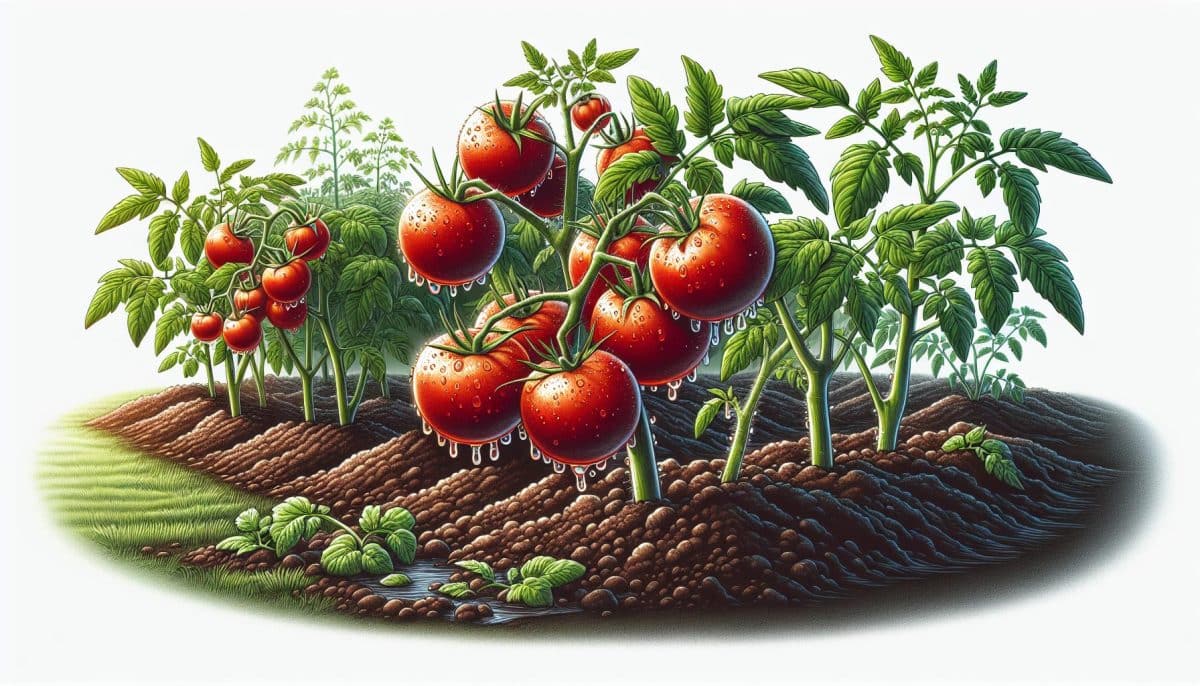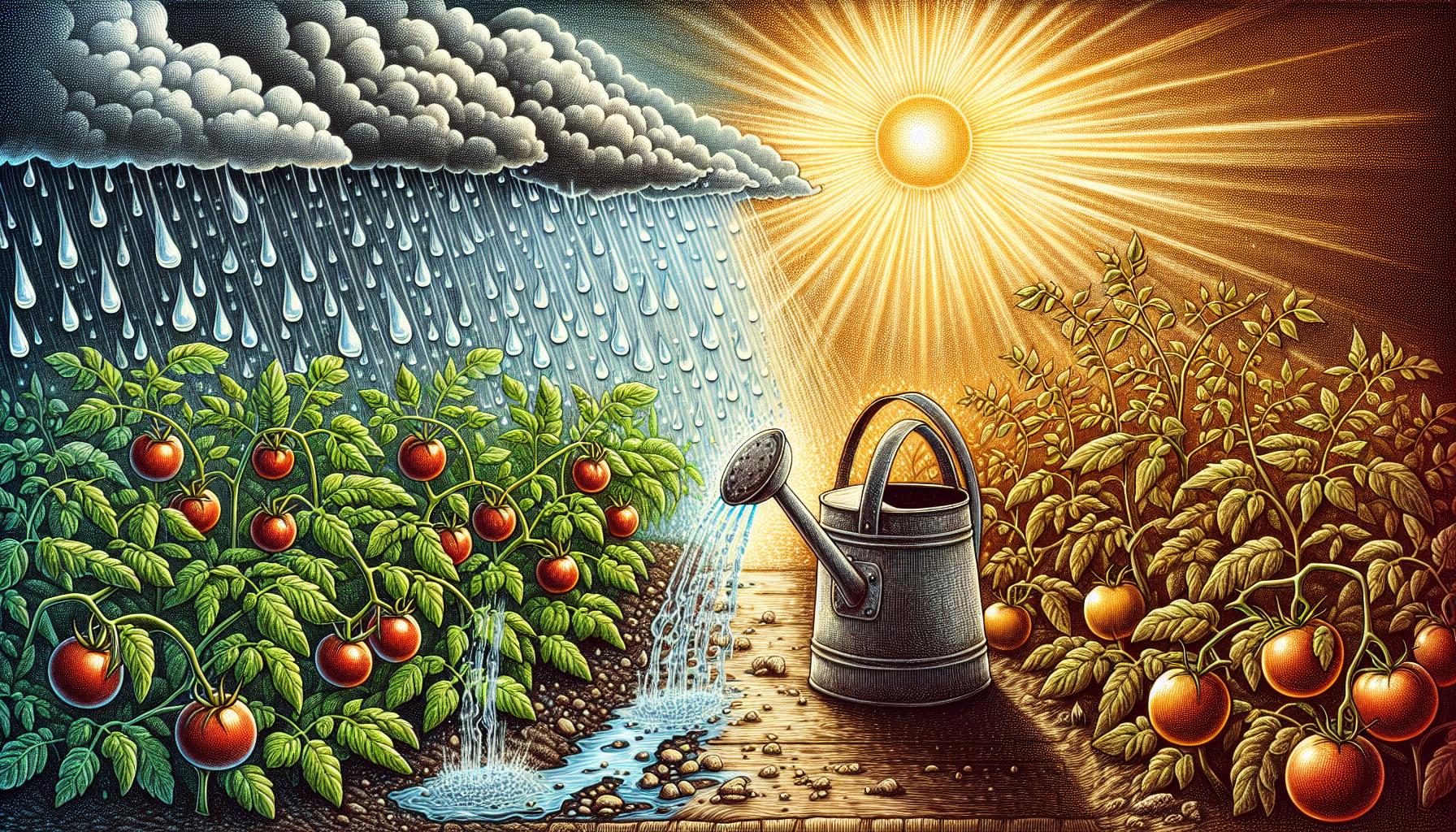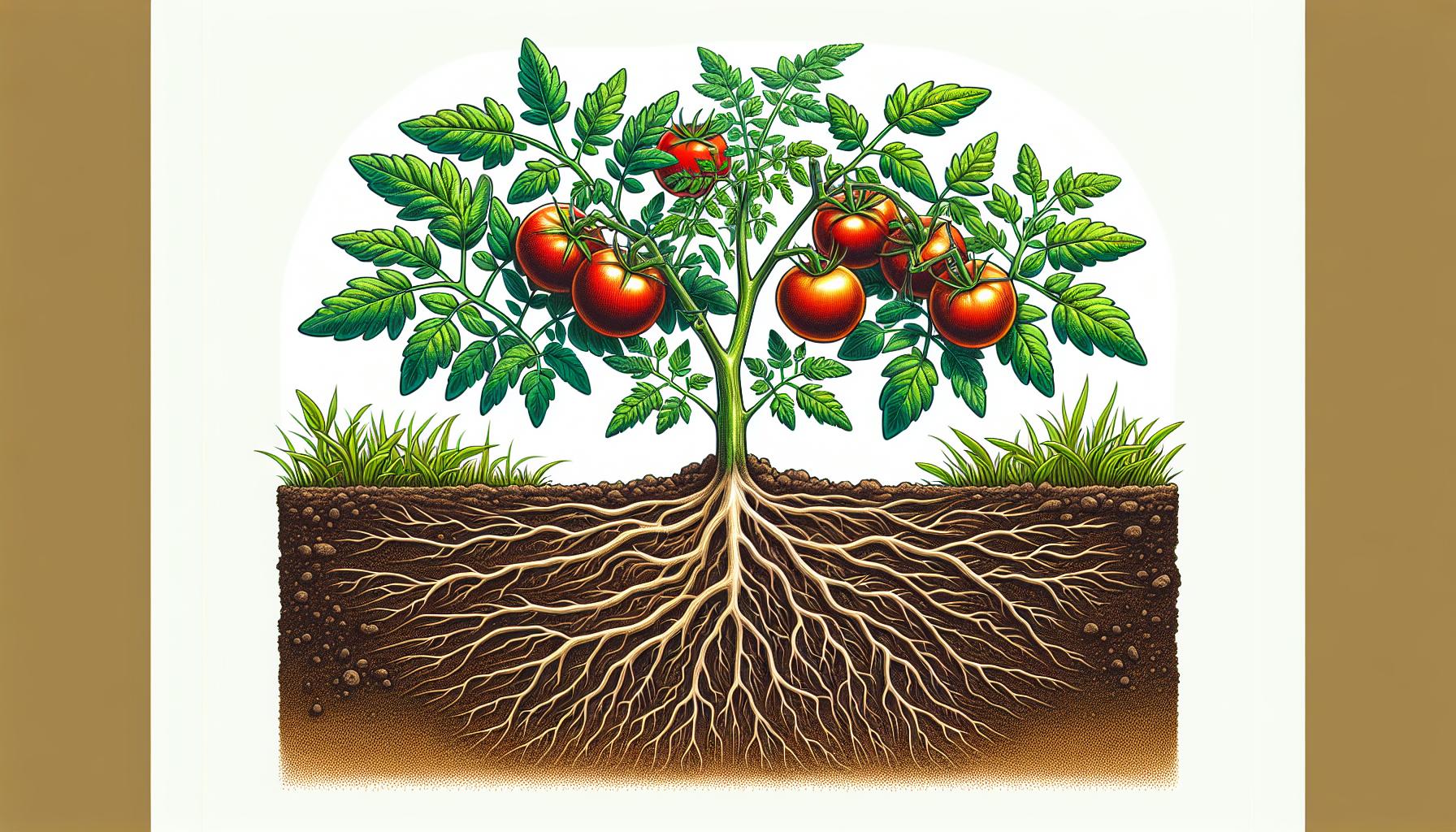
Growing tomatoes can be a rewarding experience, but getting the watering right is crucial for a bountiful harvest. You’re probably wondering how much water your tomato plants really need to thrive. Well, tomatoes require a delicate balance – too little water and they’ll wither, too much and you risk disease or poor fruit quality.
Understanding the water needs of tomatoes involves considering several factors, such as the plant’s growth stage, the weather, and the soil type. Stay tuned as we jump into the specifics of watering your tomatoes just right, ensuring they get the perfect amount for optimal growth and yield.
Factors that affect tomato watering needs
Understanding How Much Water Your Tomatoes Need hinges on several factors that influence their hydration requirement.
Climate Conditions
- High temperatures cause plants to transpire and evaporate more water.
- Wind can also increase evaporation requiring more frequent watering.
Soil Type
Soil types greatly impact water retention.
- Sandy soils drain quickly and may need more watering.
- Clay soils hold water longer which can reduce the need to water.
Tomato Plant Size
The size of your tomato plant matters.
- Larger plants with more foliage will generally require more water.
- Small seedlings or less developed plants need less water as their root systems are not as extensive.
Stage of Growth
Tomato plants have variable water needs during different growth stages.
- During fruiting, they require consistent moisture.
- After the plant has established, frequent but less heavy watering promotes deeper root growth.
Mulching
Mulching is vital in water regulation.
- A layer of mulch helps conserve soil moisture and reduces watering frequency.
- Mulching also stabilizes soil temperature, which is beneficial for tomato plants.
Keeping these factors in mind will assist you in creating a watering schedule tailored to your plants’ specific needs. Remember to monitor your plants for signs of over or under-watering such as wilted leaves or cracked fruits and adjust accordingly.
Understanding the growth stages of tomato plants

Knowing the growth stages of your tomato plants is essential for providing them with the right amount of water at each phase of development. There are generally four growth stages: seeding, vegetative, flowering, and fruiting.
Seeding Stage
During the early life of a tomato plant, your focus should be on consistent moisture to encourage strong root growth. Usually, this means watering lightly but frequently, ensuring the soil stays moist but not waterlogged.
Vegetative Stage
As the plants grow larger, they’ll require more water. This stage requires a delicate balance, as the roots are expanding and need more moisture to support the developing foliage. Generally, 1 to 1.5 inches of water per week will suffice, depending on factors like climate and soil type.
Flowering Stage
Once your tomatoes start to flower, water becomes a key player in fruit set. Adequate watering at this stage ensures a good connection between pollen and stigma, resulting in better fruit development. During peak flowering, regular watering is crucial to prevent blossom end rot and other related issues.
Fruiting Stage
When your tomato plants start producing fruit, they’re at their thirstiest. This stage can often demand up to 2 inches of water weekly. It’s vital for fruit expansion and prevention of cracking. Keep a close eye on your plants and adjust your watering based on temperature and rainfall.
Remember to check the soil before watering. If the first inch is dry, it’s time to water. Monitoring your plants for signs of stress is a constant task, but it affords you the best chance of cultivating juicy, delicious tomatoes.
The role of weather in tomato watering

Understanding how weather influences tomato watering is key to maintaining healthy plants. As tomatoes are particularly sensitive to their moisture needs, you’ll find that changes in temperature and humidity can significantly affect how much water they require. On hot, sunny days, evaporation rates are high, and tomatoes can rapidly lose water, necessitating more frequent watering. Conversely, during cool, overcast days, your plants will require less water, as the soil retains moisture for longer periods.
High temperatures can cause tomato plants to wilt, as they struggle to take up water fast enough to compensate for what’s lost through transpiration. In these conditions, you may need to water daily to keep the soil consistently moist. But, beware of overwatering, as it can lead to root rot and other issues.
Rainfall, or lack thereof, also plays a critical role. After a heavy downpour, you might not need to water your tomatoes for several days, depending on the soil’s drainage capability. On the other hand, during prolonged dry spells, your watering frequency must increase to prevent stress on the plants.
Wind can increase the rate at which plants lose water, especially in hot weather. If you’re in a particularly windy area, consider setting up windbreaks or adjust your watering schedule to account for the increased demand.
Pay close attention to the local weather forecast and use it to guide your watering practices. By doing so, you’ll ensure that your tomato plants receive the right amount of water, regardless of what the weather throws at you. Remember, consistent soil moisture levels promote steady plant growth and fruit development. Keep track of rainfall and evaporation rates in your area to make informed decisions about when and how much to water.
Choosing the right soil for tomato plants

When nurturing tomato plants, the type of soil you select is a pivotal aspect of your gardening success. Loamy soil, known for its ideal balance of sand, silt, and clay, ensures proper drainage and nutrient retention essential for tomato health.
Benefits of Loamy Soil:
- Enhances root health and growth.
- Maintains adequate moisture without waterlogging.
- Facilitates the availability of nutrients for the plant. Incorporating organic matter, such as compost or well-rotted manure, boosts the soil’s fertility. This enriches the soil ecosystem, promoting beneficial microbial activity which, in turn, supports your tomato plants. Experts recommend a soil pH level between 6.0 and 6.8 for tomatoes to thrive.
Case Study Example: The Loamy Advantage
A two-year study in a controlled environment demonstrated that tomatoes grown in loamy soil had a 20% higher yield compared to those in heavier clay soils. Also, the fruits had a better consistency and nutrient content, pointing to the significant impact of soil selection.
When amending your soil, be mindful of the following:
- Test your soil’s pH and adjust accordingly.
- Use organic fertilizers to provide a slow-release of nutrients.
- Ensure the soil is loose and well-turned to promote oxygen circulation.
By choosing the right soil for your tomatoes, you’ll create a foundation that not only saves water but promotes a bountiful harvest. Remember to continuously monitor and adjust soil conditions as your tomato plants develop.
How to water tomatoes properly

Watering your tomatoes correctly is crucial in cultivating a healthy and productive crop. Tomato plants require consistent moisture to ensure optimal growth and fruit development. You’ve learned about the importance of choosing loamy soil; now, let’s jump into the best practices for watering your tomatoes.
Early morning watering is ideal for your plants. This timing allows the water to reach deep into the soil, promoting healthy root growth while reducing evaporation losses. Also, watering in the morning ensures the foliage dries quickly, minimising the risk of fungal diseases.
Tomato plants typically need about 1-1.5 inches of water per week, but this can vary depending on weather conditions. During particularly hot or windy spells, they may need more. Here’s how to gauge:
- Use a rain gauge to monitor natural precipitation.
- Check the soil moisture at a depth of 1 inch; it should feel moist but not waterlogged.
When you water your tomatoes, aim for the base, avoiding wetting the leaves. You can achieve this by:
- Using a soaker hose or drip irrigation for a direct, gentle water supply.
- Hand watering with care, focusing on the soil around the plant.
Mulching around your plants is a recommended strategy to retain soil moisture and regulate temperature. Organic mulches, such as straw or wood chips, can also contribute to the soil’s nutrient content as they decompose.
As your plants mature and bear fruit, you may need to adjust your watering habits to meet their changing needs. Keep an eye on the plants; they will exhibit signs of stress if they’re not receiving adequate water. Your goal is to maintain even soil moisture throughout the growing season, avoiding the extremes of dry and waterlogged soil.
For optimal results, maintain accurate watering records in combination with your soil and weather observations. This will help you refine your watering schedule to suit your specific garden conditions and eventually, lead to a thriving, fruitful tomato harvest.
Conclusion
Mastering the art of watering is key to a bountiful tomato harvest. Remember to water your tomatoes in the early morning, aiming for deep soil penetration to foster strong root development. Keep an eye on soil moisture, and adjust your watering routine to meet the needs of your plants as they grow and produce fruit. With the right techniques and a bit of attentiveness, you’ll be well on your way to enjoying juicy, home-grown tomatoes from your own garden. Don’t forget to mulch and keep those watering records—they’re your secret weapon for next season’s success.
Colin Macmillan is a seasoned entrepreneur and the CEO of Riverwood Landscape, a leading landscaping company based in Canada. He has been at the helm of the company since leaving high school, demonstrating his strong leadership skills and business acumen.
Colin’s expertise lies in various aspects of landscaping, including lawn care, interlocking, sod installation, and commercial maintenance. His hands-on approach and dedication to the craft have been instrumental in building Riverwood Landscape into a reputable brand.
One of his most notable achievements is the creation of a successful landscape franchise that services multiple locations. This accomplishment underscores his strategic thinking and ability to scale operations effectively.
Colin has also had the privilege of working with Guelph Hospital for landscaping and maintenance, a testament to the trust and reliability that his company has earned over the years.
His professional mission is to offer the best services and experiences for customers, a goal that he tirelessly pursues. Colin’s commitment to excellence and customer satisfaction continues to drive the growth and success of Riverwood Landscape.








